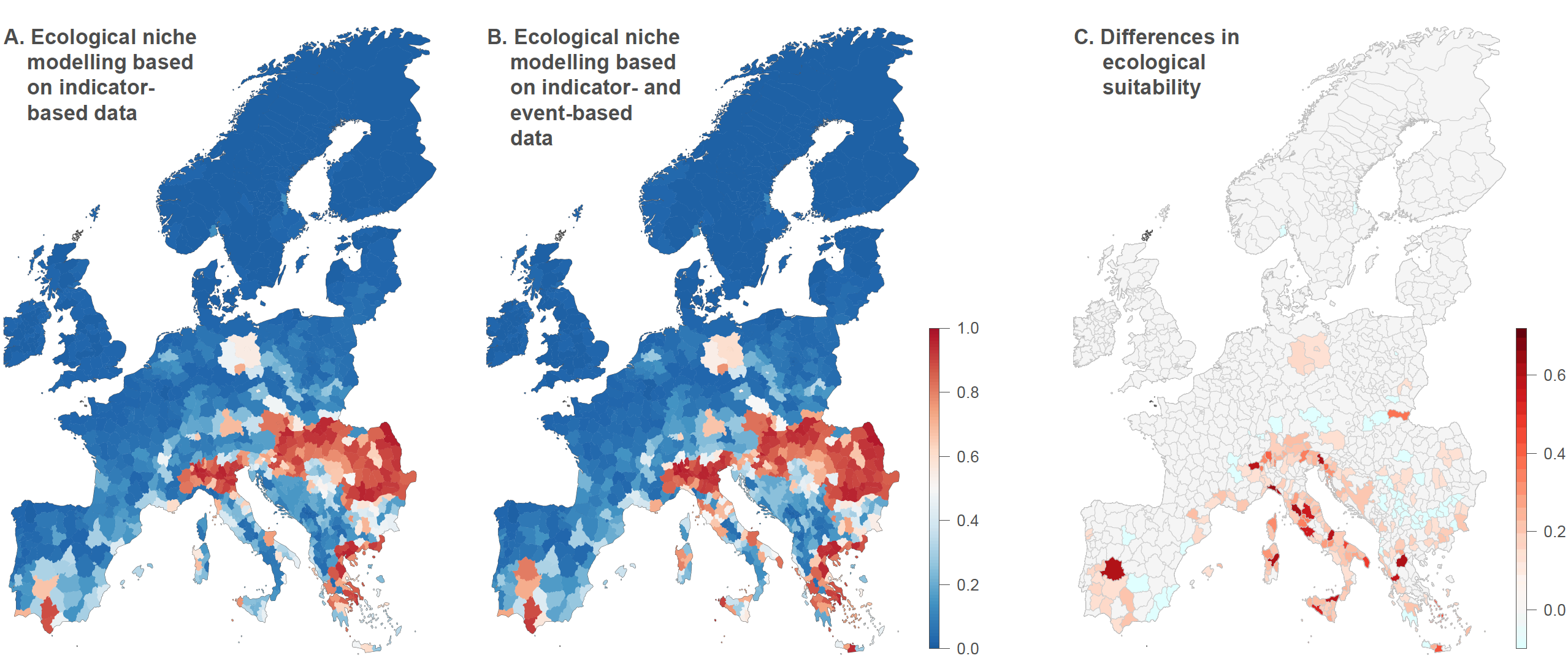New study on integrating indicator-based and event-based surveillance data to improve risk mapping
Published on October 30, 2024, by Kyla Serres
Our new study on integrating indicator-based and event-based surveillance data to improve risk mapping has just been published in Eurosurveillance. West Nile virus (WNV) has an enzootic cycle between birds and mosquitoes, humans being incidental dead-end hosts. Circulation of WNV is an increasing public health threat in Europe. While detection of WNV is notifiable in humans and animals in the European Union, surveillance based on human case numbers presents some limitations, including reporting delays. In this study, we aimed to perform risk mapping of WNV circulation leading to human infections in Europe by integrating two types of surveillance systems: indicator-based and event-based surveillance. For indicator-based surveillance, we used data on human case numbers reported to the European Centre for Disease Prevention and Control (ECDC), and for event-based data, we retrieved information from news articles collected through an automated biosurveillance platform. In addition to these data sources, we also used environmental data to train ecological niche models to map the risk of local WNV circulation leading to human infections. The ecological niche models based on both types of surveillance data highlighted new areas potentially at risk of WNV infection in humans, particularly in Spain, Italy, France and Greece. Although event-based surveillance data do not constitute confirmed occurrence records, integrating both indicator-based and event-based surveillance data proved useful. These results underscore the potential for a more proactive and comprehensive strategy in managing the threat of WNV in Europe by combining indicator- and event-based and environmental data for effective surveillance and public health response. Read the whole study here.

Figure 2: comparison of West Nile virus risk maps obtained when analysing indicator-based surveillance data and indicator-based and event-based surveillance data, Europe, 2006–2021. EBS: event-based surveillance; ENM: ecological niche modelling; IBS: indicator-based surveillance; NUTS: nomenclature of territorial units for statistics. A. The map shows the ecological suitability of optimised NUTS level 3 areas for local circulation of West Nile virus, as estimated by ENM analyses based on IBS data. B. The map shows the ecological suitability of optimised NUTS level 3 areas for local circulation of West Nile virus, as estimated by ENM analyses based on a combination of IBS and EBS data. These maps display the averaged ecological suitability values estimated by 100 replicates of the boosted regression tree analysis. C. The map highlights the difference in ecological suitability values. Areas coloured in red indicate areas with higher ecological suitability estimates when the model is trained on the combination of IBS and EBS data, while light blue areas represent areas with higher ecological suitability estimates when the models are only trained on IBS data.
Reference: Serres K, Erazo D, Despréaux G, Vincenti-González MF, Van Bortel W, Arsevska E, Dellicour S (2024). Integrating indicator-based and event-based surveillance data to improve vector-borne disease risk mapping in Europe. Eurosurveillance 44: 2400084